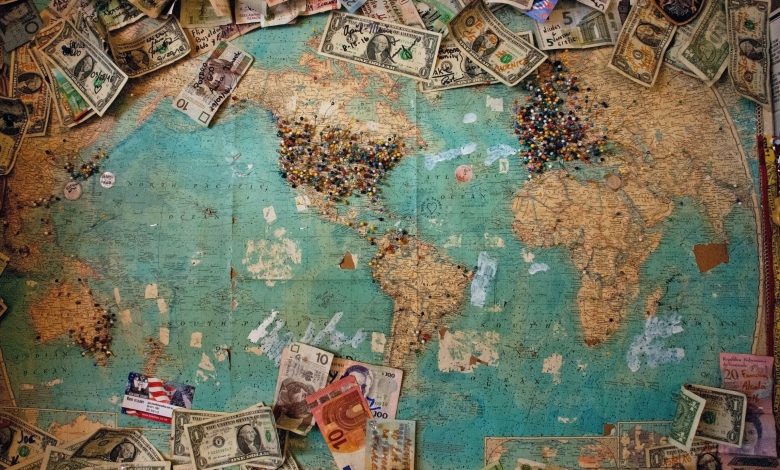
Currency wars refer to deliberate actions taken by a government or central bank to devalue or manipulate its national currency, with the purpose of improving its competitiveness in international trade. These actions involve tactics such as reducing interest rates, implementing quantitative easing, and directly intervening in currency markets. The ultimate goals are to make exports more affordable, attract foreign investment, and stimulate economic growth.

Although currency wars are not a recent occurrence, they have been historically used by countries aiming to gain an advantage over their trading partners. In the 1930s, during the Great Depression, several nations resorted to devaluing their currencies to protect their domestic industries. However, the advent of globalization and the increasing interdependence of economies have amplified the impact and complexity of such conflicts in modern times.
Reasons Behind Currency Wars
Currency wars, which have significant global economic implications, arise from various underlying factors. Let’s explore these factors and shed light on the intricate dynamics that shape the battleground of currency wars.
Economic Disparities
One notable factor contributing to currency wars is economic disparities, particularly when a country experiences significant trade deficits. In such cases, the nation’s exports become relatively expensive, placing it at a disadvantage in the global market. To regain competitiveness, governments may resort to strategic currency manipulation. By intentionally devaluing their currencies, they seek to make exports more affordable and appealing to foreign buyers. This approach aims to enhance trade competitiveness and revitalize the country’s economic prospects.
Promoting Trade Competitiveness
The relentless pursuit of trade competitiveness acts as a catalyst for currency wars. Countries with substantial foreign currency reserves strive to strengthen their export-driven economies. As part of their strategy, these nations deliberately devalue their currencies. The goal is to make their goods more affordable for foreign buyers, resulting in increased export volumes and attracting foreign investment. Through currency manipulation, nations aim to secure a larger share of the global market, establish themselves as economic powerhouses, and ensure long-term economic stability.
Economic Growth Strategies
Currency manipulation often originates from a country’s economic growth strategy, particularly in developing nations. These countries rely on currency devaluation as a means to stimulate economic growth and overcome underdevelopment. By intentionally reducing the value of their currencies, they can enhance the competitiveness of their products in international markets. This approach not only attracts foreign investment but also stimulates domestic industries and boosts employment rates. Consequently, these nations engage in currency manipulation as a strategic maneuver to propel their economies forward and achieve sustainable growth.
Pressures from Financial Markets

Financial market pressures, including speculative attacks and currency fluctuations, can act as triggers for currency wars. When investors lose confidence in a country’s economic prospects, they may engage in speculative trading, leading to a decline in the value of its currency. In response, governments may directly intervene in currency markets or implement policies to stabilize their currencies. These defensive measures aim to restore confidence and prevent further depreciation. However, such interventions can inadvertently escalate tensions between nations, triggering retaliatory actions and exacerbating the currency war.
In conclusion, currency wars arise from a complex interplay of factors. Economic disparities, the pursuit of trade competitiveness, economic growth strategies, and pressures from financial markets all contribute to the initiation and escalation of these conflicts. Understanding the causes behind currency wars is crucial for policymakers, economists, and global stakeholders to navigate the intricate dynamics of international trade and foster a stable and cooperative global economic environment.
Consequences
In the dynamic realm of global finance, the causes behind currency wars intricately intertwine, creating a complex web of economic intricacies and power dynamics. As nations fiercely compete for economic supremacy, they resort to manipulative tactics to exert control over their currencies, shaping a dynamic and ever-evolving battleground.
Let us embark on a deeper exploration, delving into the extensive consequences of this global financial competition and uncovering the diverse strategies employed by nations in their relentless pursuit of dominance.
Implications of Currency Wars
While currency manipulation may yield short-term advantages for the countries involved, its repercussions can prove detrimental to the global economy as a whole. The competitive devaluation of currencies has the potential to initiate a dangerous downward spiral, as other nations respond with retaliatory devaluations of their own. This vicious cycle poses a threat to global trade and financial systems, eroding trust, distorting market signals, and fostering protectionist measures that hinder economic cooperation.
Furthermore, currency wars can ignite inflationary pressures and contribute to the formation of asset bubbles, as excessive liquidity inundates the markets. This surge in liquidity increases the risk of financial crises, as investors become uncertain about the value of currencies and assets. Developing countries, heavily reliant on commodity exports, are particularly susceptible, as their currencies depreciate, exacerbating trade imbalances and negatively impacting their terms of trade.
Strategies Utilized in the Battle
Nations employ a diverse range of strategies and tactics to manipulate their currencies, all aimed at gaining a competitive advantage in the relentless race for economic supremacy. Let’s explore some of the common strategies employed in this high-stakes economic warfare.
One prevalent tactic involves direct intervention, where a nation’s central bank actively participates in the foreign exchange market. Through the purchase or sale of its own currency, a country can exert influence on its value. Buying its own currency strengthens it, while selling it weakens its value. This approach is frequently used to counteract excessive appreciation or depreciation and maintain a desired exchange rate.
Another powerful tool in the currency war arsenal is the manipulation of interest rates. Adjusting interest rates can significantly impact a currency’s attractiveness to investors, thereby influencing its value. Lowering interest rates diminishes the appeal of a currency for investment, leading to devaluation, while raising interest rates enhances its allure and strengthens its value. Central banks strategically manipulate interest rates to steer the value of their currency and stimulate economic growth.
Quantitative easing represents yet another strategy commonly employed by central banks. In this approach, the central bank purchases government bonds or other assets, injecting liquidity into the economy. By increasing the money supply, quantitative easing aims to stimulate economic activity and foster growth. However, if not carefully managed, this strategy can inadvertently devalue a currency.
Diverse Strategies

These multifaceted strategies of currency manipulation contribute to the intricate and ever-evolving landscape of the currency war. Grasping these tactics is essential for understanding the complex dynamics at play and comprehending the significant impact of this economic competition on global economies.
In the realm of global economics, the currency war emerges as a captivating contest for economic dominance, driven by a variety of factors such as economic imbalances, trade competitiveness, growth strategies, and financial market pressures. Nations employ a range of tactics, including direct intervention, interest rate control, and quantitative easing, to manipulate their currencies and gain an advantageous position in this intense battle.
However, it is important to acknowledge that this fierce competition for economic supremacy comes with consequences. The currency war has the potential to disrupt global trade as retaliatory actions and competitive devaluations can destabilize the equilibrium of international commerce. The downward spiral of currency devaluations can erode trust, distort market signals, and foster protectionist measures that hinder economic cooperation and impede the establishment of a stable global economic order.
Furthermore, the manipulation of currencies in the pursuit of economic dominance can have far-reaching implications. One significant risk associated with currency wars is the potential for inflationary pressures to arise. When nations intentionally devalue their currencies, it can lead to higher import prices, subsequently driving up domestic inflation rates. This can erode consumers’ purchasing power and reduce overall economic stability.
Aggressive Utilization of Strategies
Moreover, the aggressive utilization of strategies like quantitative easing can introduce excessive liquidity into the financial system. While intended to stimulate economic activity, this influx of liquidity can create asset bubbles and distort market valuations. When these bubbles burst, it can trigger financial crises that have repercussions not only within individual countries but also across international financial systems.
To mitigate these risks, exercising caution and implementing effective monitoring mechanisms is imperative. Central banks and regulatory bodies need to closely monitor the impact of currency manipulation tactics and take appropriate measures to maintain stability. Transparency in policy decisions and communication between nations can help build trust and foster cooperation, reducing the potential for tensions and escalating conflicts.
In navigating the ever-changing landscape of the currency war, international cooperation and coordination are crucial. Establishing forums for dialogue and collaboration, such as international economic summits, can provide platforms for nations to discuss concerns, share best practices, and work towards common goals. By promoting an environment of economic transparency, nations can create a more harmonious and balanced global economic order.
Conclusion
The currency war represents a captivating global contest for economic dominance, driven by various factors and characterized by intricate dynamics. Nations employ tactics such as direct intervention, interest rate control, and quantitative easing to manipulate their currencies. However, it is essential to recognize the potential consequences of this intense competition, including the destabilization of global trade, inflationary pressures, and the risk of financial crises. Understanding the complexities of the currency war is vital for comprehending its implications and advocating for measures that promote stability, cooperation, and effective monitoring mechanisms. As the battle unfolds, fostering collaboration and transparency remains paramount to navigating the ever-changing landscape and maintaining a resilient global economic framework.